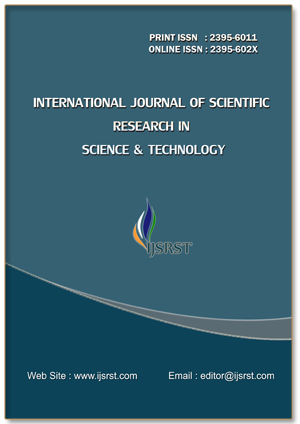Climate Change and Armed Conflict in the Horn of Africa Region
DOI:
https://doi.org/10.32628/IJSRST2411482Keywords:
Armed conflict, Climate changeAbstract
The influence of environmental variability on pastoral conflict in the Horn of Africa cannot be underestimated. Studies on climate change and violent conflict in the Horn of Africa indicated that changing rainfall patterns, drought, changes in vegetation cover, and increasing resource scarcity have contributed to various types of violent conflict. Research also shows that these local resource conflicts are sometimes drawn into more intense power struggles related to civil war. In this paper, four interlinked mechanisms can be identified for why and when climate change increases the risk of violent conflict in the greater Horn of Africa: (a) worsening livelihood conditions; (b) migration and changing pastoral mobility patterns; (c) tactical considerations of armed groups; and (d) exploitation of local grievances by the elite. These mechanisms can be divided into two categories. The first two mainly relate to the causes of conflict, while the latter two mainly relate to changing conflict dynamics.
Downloads
References
Adano, W. R., Dietz, T., Witsenburg, K., & Zaal, F. (2012). Climate change, violent conflict and local institutions in Kenya’s drylands. Journal of peace research, 49(1), 65-80. DOI: https://doi.org/10.1177/0022343311427344
Adem, T. A., Ember, C. R., Skoggard, I., Jones, E. C., & Faas, A. J. (2012). Dangerous geography: Spatial distribution of livestock raiding in northwestern Kenya. Ethnology, 1-29.
Assal, M. A. (2006). Sudan: Identity and conflict over natural resources. Development, 49(3), 101-105. DOI: https://doi.org/10.1057/palgrave.development.1100284
Beerling, D. (2017). The emerald planet: how plants changed Earth's history. Oxford University Press.
Benjaminsen, T. A., Maganga, F. P., & Abdallah, J. M. (2009). The Kilosa killings: Political ecology of a farmer–herder conflict in Tanzania. Development and Change, 40(3), 423-445. DOI: https://doi.org/10.1111/j.1467-7660.2009.01558.x
Bocchi, S., Disperati, S. P., & Rossi, S. (2006). Environmental security: A geographic information system analysis approach—the case of Kenya. Environmental Management, 37(2), 186-199. DOI: https://doi.org/10.1007/s00267-004-0331-3
Brown, I. A. (2010). Assessing eco-scarcity as a cause of the outbreak of conflict in Darfur: a remote sensing approach. International Journal of Remote Sensing, 31(10), 2513-2520. DOI: https://doi.org/10.1080/01431161003674592
Chavunduka, C., & Bromley, D. W. (2011). Climate, carbon, civil war and flexible boundaries: Sudan's contested landscape. Land Use Policy, 28(4), 907-916. DOI: https://doi.org/10.1016/j.landusepol.2011.03.007
De Juan, A. (2015). Long-term environmental change and geographical patterns of violence in Darfur, 2003–2005. Political Geography, 45, 22-33. DOI: https://doi.org/10.1016/j.polgeo.2014.09.001
Detges, A. (2014). Close-up on renewable resources and armed conflict: The spatial logic of pastoralist violence in northern Kenya. Political Geography, 42, 57-65. DOI: https://doi.org/10.1016/j.polgeo.2014.06.003
Hundie, B. (2010). Conflicts between Afar pastoralists and their neighbors: Triggers and motivations. International Journal of Conflict and Violence (IJCV), 4(1), 134-148.
Ide, T., Schilling, J., Link, J. S., Scheffran, J., Ngaruiya, G., & Weinzierl, T. (2014). On exposure, vulnerability and violence: spatial distribution of risk factors for climate change and violent conflict across Kenya and Uganda. Political Geography, 43, 68-81. DOI: https://doi.org/10.1016/j.polgeo.2014.10.007
Inselman, A. D. (2003). Environmental degradation and conflict in Karamoja, Uganda: the decline of a pastoral society. International journal of global environmental issues, 3(2), 168-187. DOI: https://doi.org/10.1504/IJGENVI.2003.003863
Kuele, G., & Miola, A. C. (2018). Climate change is feeding armed conflict in Somalia. Institute for Security Studies, 6.
Leff, J. (2009). Pastoralists at war: Violence and security in the Kenya-Sudan-Uganda border region. International Journal of Conflict and Violence (IJCV), 3(2), 188-203.
Markakis, J. (2003). Anatomy of a Conflict: Afar & Ise Ethiopia. Review of African Political Economy, 30(97), 445-453. DOI: https://doi.org/10.1080/03056244.2003.9659777
Maystadt, J. F., & Ecker, O. (2014). Extreme weather and civil war: does drought fuel conflict in Somalia through livestock price shocks?. American Journal of Agricultural Economics, 96(4), 1157-1182. DOI: https://doi.org/10.1093/ajae/aau010
Meier, P., Bond, D., & Bond, J. (2007). Environmental influences on pastoral conflict in the Horn of Africa. Political Geography, 26(6), 716-735. DOI: https://doi.org/10.1016/j.polgeo.2007.06.001
O’Loughlin, J., Witmer, F. D., Linke, A. M., Laing, A., Gettelman, A., & Dudhia, J. (2012). Climate variability and conflict risk in East Africa, 1990–2009. Proceedings of the National Academy of Sciences, 109(45), 18344-18349. DOI: https://doi.org/10.1073/pnas.1205130109
Raleigh, C., Linke, A., Hegre, H., & Karlsen, J. (2010). Introducing ACLED: an armed conflict location and event dataset: special data feature. Journal of peace research, 47(5), 651-660. DOI: https://doi.org/10.1177/0022343310378914
Rowhani, P., Degomme, O., Guha-Sapir, D., & Lambin, E. F. (2012). Malnutrition and Conflict in Eastern Africa: Impacts of Resource Variability on Human Security. In Climate Change, Human Security and Violent Conflict (pp. 559-571). Springer, Berlin, Heidelberg. DOI: https://doi.org/10.1007/978-3-642-28626-1_27
Rubenson, S. (1991). Environmental stress and conflict in Ethiopian history: looking for correlations. Ambio (Sweden).
Sosnowski, A., Ghoneim, E., Burke, J. J., Hines, E., & Halls, J. (2016). Remote regions, remote data: A spatial investigation of precipitation, dynamic land covers, and conflict in the Sudd wetland of South Sudan. Applied Geography, 69, 51-64. DOI: https://doi.org/10.1016/j.apgeog.2016.02.007
Ülker, D., Ergüven, O., & Gazioğlu, C. (2018). Socio-economic impacts in a Changing Climate: Case Study Syria. International Journal of Environment and Geoinformatics, 5(1), 84-93. DOI: https://doi.org/10.30897/ijegeo.406273
Webersik, C. (2008). Wars Over Resources? Evidence from Somalia. Environment: Science and Policy for Sustainable Development, 50(3), 46-58. DOI: https://doi.org/10.3200/ENVT.50.3.46-58
Zain, M. E. (2006). Ruling Elite, Frontier-Caste Ideology and Resource Conflicts in the Sudan. Journal of Peacebuilding & Development, 3(1), 36-47. DOI: https://doi.org/10.1080/15423166.2006.221681318062
Zhang, Y. X., Chao, Q. C., Zheng, Q. H., & Huang, L. (2017). The withdrawal of the US from the Paris Agreement and its impact on global climate change governance. Advances in Climate Change Research, 8(4), 213-219. DOI: https://doi.org/10.1016/j.accre.2017.08.005
Downloads
Published
Issue
Section
License
Copyright (c) 2025 International Journal of Scientific Research in Science and Technology

This work is licensed under a Creative Commons Attribution 4.0 International License.
https://creativecommons.org/licenses/by/4.0





